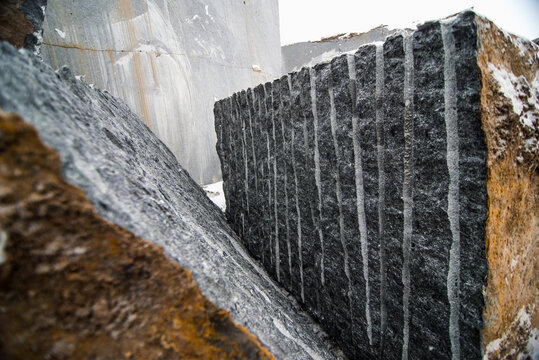Checking Out Granite Quarries in South Africa Industry: From Quarry to Work of art
Checking Out Granite Quarries in South Africa Industry: From Quarry to Work of art
Blog Article
Uncovering the Rich History and Sustainable Practices of Granite Quarrying
As we base on the precipice of uncovering the complex tapestry of granite quarrying, a trip through time reveals not simply the physical act of drawing out rock however additionally the social and historical relevance woven right into the really fabric of this technique. From the old origins that laid the structure for modern quarrying techniques to the lasting practices that are forming the future of this industry, each sculpt mark on granite surfaces tells a story waiting to be unearthed (granite quarries in south africa). The legacy of granite quarrying stretches far past mere removal; it is a testimony to human ingenuity, resilience, and the enduring allure of this impressive rock
Old Beginnings of Granite Quarrying
Going back to ancient human beings, the practice of quarrying granite has been an integral component of human history and building development. The earliest evidence of granite quarrying dates back to ancient Egypt, where massive pyramids and intricate sculptures were crafted from this long lasting rock. The Egyptians made use of primitive tools to extract granite blocks from quarries, showcasing the significance of this product in their significant building and constructions.
Progressing in background, the Greeks likewise made considerable payments to the quarrying of granite. The Greeks made use of granite in different building wonders, such as holy places and statues, demonstrating their ability in shaping and carving this durable rock. The Romans further refined the strategies of quarrying granite, using sophisticated tools like chisels and hammers to extract and form granite for their renowned structures.
Via the centuries, the practice of quarrying granite has actually progressed, with modern innovations improving efficiency while preserving the ageless allure of this natural stone - granite quarries in south africa. From ancient people to contemporary building contractors, the legacy of granite quarrying remains to shape our globe
Advancement of Quarrying Strategies
The advancement of quarrying techniques has been noted by a continual development towards better effectiveness and precision in drawing out granite. From the primary methods employed by our ancestors to the advanced innovations used in contemporary quarrying operations, the sector has undertaken significant improvements. Early quarrying techniques included hand-operated labor with standard devices such as blades, hammers, and wedges to extract granite blocks from the earth. As civilizations proceeded, strategies like fire-setting and primitive nitroglycerins were presented to promote the extraction process.
In even more recent times, the development of equipment revolutionized the quarrying industry, making it possible for faster removal rates and enhanced productivity. Technologies such as ruby wire saws, high-pressure water jets, and pneumatic drills have become conventional in contemporary quarries, enabling accurate cutting and reduced waste. Advancements in computer-controlled equipment and 3D modeling have actually optimized quarrying procedures, leading to minimal environmental influence and improved sustainability methods. As the demand for granite remains to increase, the advancement of quarrying strategies remains integral to conference industry needs effectively and sustainably.
Social Importance of Granite
Granite holds an extensive cultural value throughout numerous worlds as a result of its long-lasting presence in building work of arts and revered monuments. From the impressive pyramids of Egypt to the complex carvings of the Angkor Wat temple in Cambodia, granite has actually been a product of option for sharing magnificence and long life in social heritage. In ancient Rome, granite columns adorned temples and public buildings, signifying toughness and permanence. The cultural significance of granite expands past its physical attributes; it personifies resilience, stability, and eternity, making it an icon of withstanding traditions and traditions.

Sustainable Practices in Quarrying
Amidst the abundant background of granite quarrying and its cultural importance lies a growing focus on sustainable techniques within the industry. As environmental awareness and issues about source exhaustion have actually increased internationally, the quarrying sector has actually significantly welcomed sustainable methods to decrease its influence on the atmosphere and bordering neighborhoods.

Moreover, improvement and recovery of quarry sites post-extraction are essential to lasting techniques. By recovering quarried areas to a natural or useful state, such as creating wild animals habitats or recreational spaces, quarriers can counter the ecological footprint of their procedures and add positively to the neighborhood ecological community.
Legacy of Granite Quarrying
With a historic backdrop soaked in workmanship and industrial development, what sustaining effect has granite quarrying left on the landscape of modern society? The tradition of granite quarrying transcends plain extraction techniques; it important source has formed building marvels, metropolitan landscapes, and cultural heritage worldwide. The durable nature of granite has actually made it a preferred option for monuments, buildings, and facilities, standing as a testimony to the ability and creativity of quarry workers throughout generations.
Furthermore, the economic impact of granite quarrying can not be overlooked. The market remains his explanation to offer job opportunity and drive neighborhood economic situations in regions where granite extraction is common. It has actually likewise stimulated technological advancements in quarrying methods and tools, bring about much more efficient and lasting practices.
In regards to sustainability, the legacy of granite quarrying includes initiatives to alleviate ecological effects via improvement tasks and accountable source administration. By stabilizing economic rate of interests with environmental stewardship, the industry strives to make certain that future generations can proceed to take advantage of this long-lasting natural source.
Verdict

Report this page